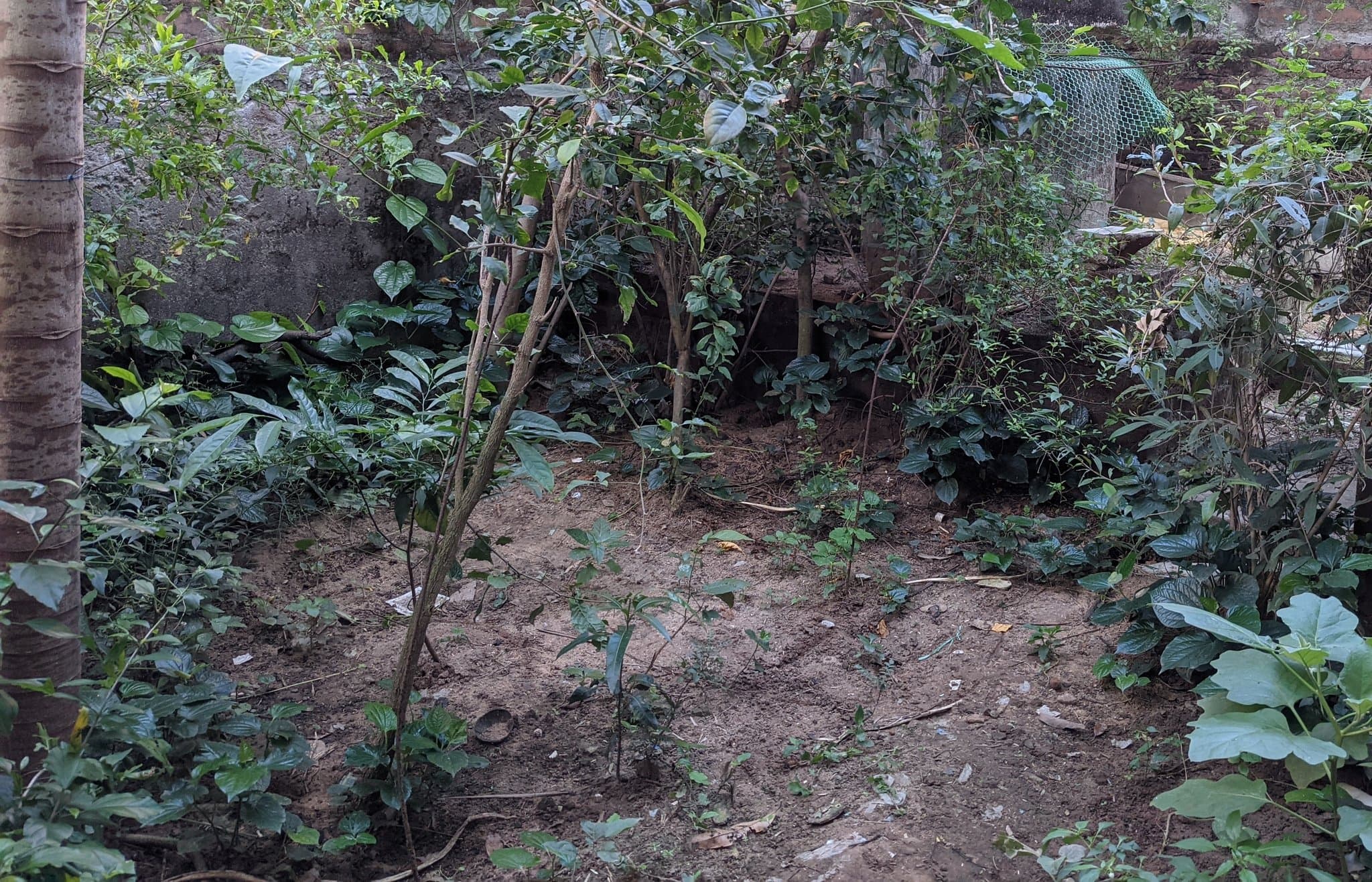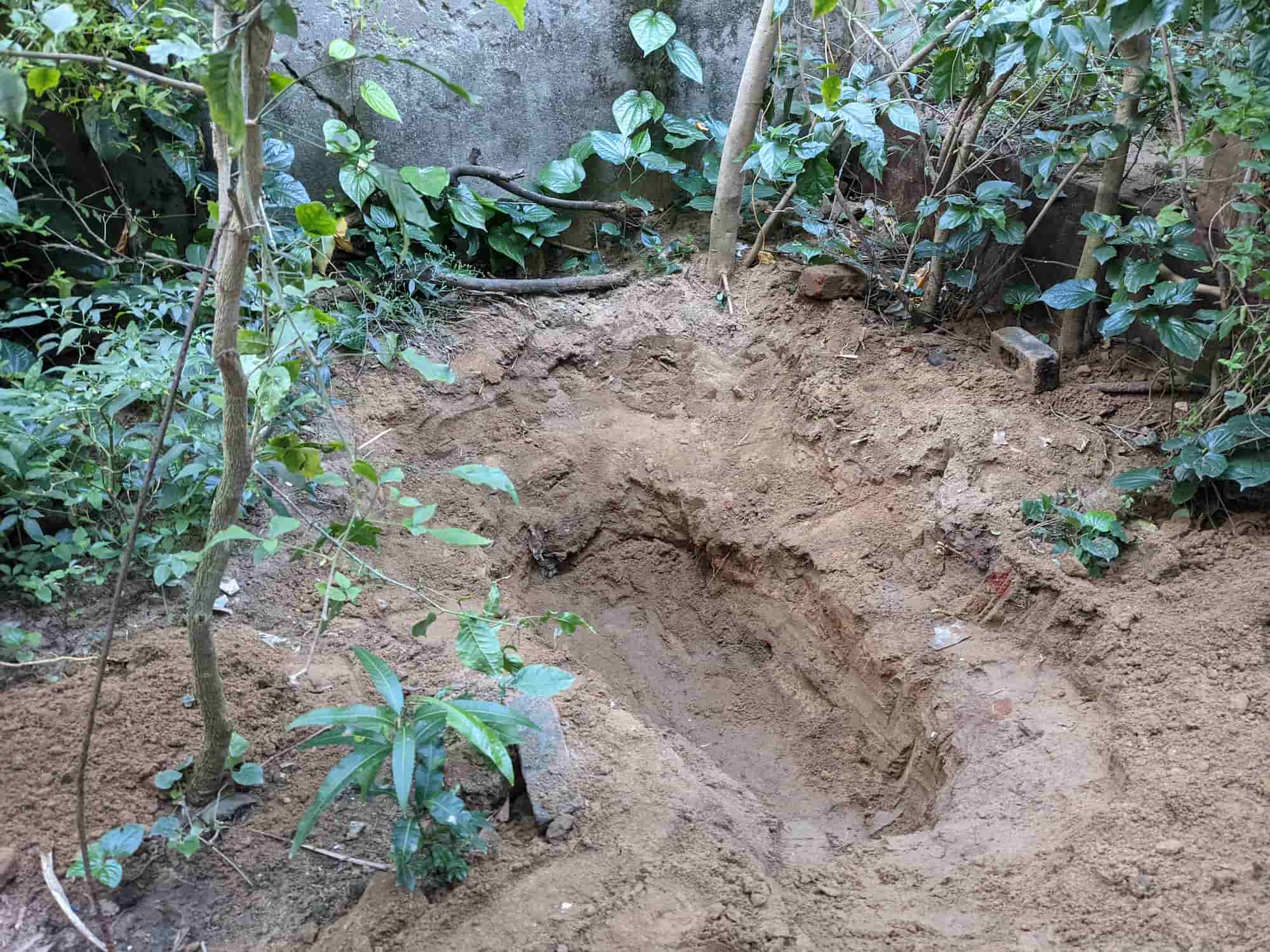It all started when my family started growing lotus in my terrace garden. Three months later(around December), we realised that the pot wouldn't be big enough for the plants. The COVID-19 lockdown was now gone, so we went around asking for pots that were designed to accommodate these aquatic plants. We did find a few nurseries selling those, but they were all priced at around 5000 rupees for what was basically a 5 feet wide piece of concrete. We decided to take some time to think about what can be done. These were some of the most important considerations that finally led us to decide against having a wide-bodied concrete pot:
- This had to be kept somewhere with sufficient sunlight for at least a few hours every day to ensure plant growth.
- Sunlight also promotes the growth of algae. We experimented by placing the small pot we had outside for 6 hours every day, and within 3 days, the water had turned green even though the surface was mostly covered by lotus leaves.
- We had to ensure that it didn't become a breeding ground for mosquitoes.
- The easiest solution to this was to add a few fishes. However, fish waste(and any excess fish food) would promote algae.
- Another solution involved using aquarium filters inside the pot. A small filter should help in removing the organic waste and would also incude water movement. This water movement should reduce mosquitoes and algae. However, lotus prefers still water.
Based on these, we decided that what we needed was a really large pot(at least few feet long) with filters in one end and lotus plants in the other end. I did some calculations for the amount of water required for a rectangular pot about 3 feet wide and 6 feet long with a depth of 3 feet. It came to around 1500 liters. Since 1 liter of water ~= 1kg, this would mean that the roof of my ~20-year old house would have a load of 1500 kgs on it. This was a no-go. I went back to the drawing board and then had this thought of just digging a pond. We had some space in the backyard, and most importantly, I had way too much free time in my hands thanks to the whole COVID-19 situation.
I had decided that if a bare minimal pond would cost up to 2x of the concrete pot, it was totally worth it. After some research, I found out that the cost of the liner material to make the pond waterproof was only 2500 rupees for a pond that was 8 feet long. My parents were immediately interested in this idea. I set a budget of 10,000 rupees for the pond(2x of the concrete-based 5 feet pot) with dimensions of 6ft x 8ft x 4ft. This budget would be towards the most critical elements of the pond without which it wouldn't function properly. I was okay with spending another 10,000 rupees for decoration and stuff if the first 10,000 gave good results. With this in mind, I started digging around the end of December.
The first weekend was mostly spent on clearing the place where I was about to dig. We had chosen a place far away from the mango tree we have in the backyard to ensure that the pond was safe from ripe mangoes that drop during the months of April-May. However, this place had a lot of plants that my dad was very protective about so we spent a lot of time transplanting them to other locations without disturbing their roots.
After 2 weekends of digging, the pit was ready.
One thing to remember here is that the surfaces have to be level if stones have to be placed in the future. I hadn't thought of this and as a result, I had to struggle with placing some large stones along the sides.
After this, I got some medium quality tarp to use as the base layer. The intention behind this is to protect the main pond liner from stones and roots that might damage the liner. I got these in a local store for about 300 rupees. Next, I went looking for a filter and some rocks to decorate the pond. I live close to a major aquarium hub in Chennai. A big shocker to me was that these rocks were expensive. In fact, this is the most expensive component of my pond. I spent about 10,000 on just rocks 😅 I did consider some cheaper variants on IndiaMart but the shipping charges were ridiculous and so I had to settle. One huge challenge was moving these rocks and placing them inside the pond. Each of these weighed anywhere between 12-25 kilograms, and it was definitely not fun. I had calculated the water capacity of the pond to be somewhere around 600 liters and the shops there suggested getting an external canister filter. This was a good idea for several reasons:
- I could keep the filter outside the pond and wouldn't have to deal with the risk of running an electric cable inside water that could get damaged by falling rocks or some animal biting the wire.
- These come with the filter and pump in one unit. They have very few moving parts and maintenance would be simple.
- If it rains a lot and the backyard floods for some reason, I can easily remove this in under 5 minutes and use the pit as an overflow for the pond.
- I also realised that this would be much cheaper than what proper pond filters designed for medium to large sized ponds would cost.
- I got a filter with 650 liter capacity for 4500 rupees. This had an internal UV light, four layers of various substrates to filter water, and was small and silent.
This filter has been working about 6 months now and I haven't had an issue with it. I have cleaned the filter once each month - I basically open it, run water over the filtering substrates and put them back. This takes only 20-30 minutes. If I build another pond with a larger capacity, I might just get one more of this and use two filters instead. Even if it fails, 4500 is a much lesser loss than expensive pond filters. However, one limitation of this filter is that it has to be placed at a height lower than the water source. So I had to dig another small pit close to the pond. This pit was circular, 2 feet across and about 4.5 feet deep. I just ran an extension cord through my window and got the power supply needed(an electrician later installed an outlet outdoor).
So with most of the stuff ready to go, this was the budget till this point:
Budget
- Critical parts - 10000
- Decoration - 10000
Total Budget - 20000
Expenses
- Liner - 2500 INR
- Filter - 4500 INR
- Liner base layer - 300 INR
- Stones/Rocks - 10000 INR
Spent - 17300
Savings - 2700
I ended up using the 2700 saved from the budget towards getting some plants and grass for surrounding the pond. I also got a pair of koi for 300 rupees at an ornamental fish store.
Here's how the pond looks now:
Here are some other things that I learnt over these few months:
- Do not put the inlet tube for the filter till the bottom of the pond. If the outlet back into the pond gets knocked out for some reason, this would cause the pond to drain completely. Once a rat managed to push the outlet tube away from the pond and I woke up to see the pond at 70% capacity. If I had laid the tube till the pond's base, I would have woken up to the sight of dead fishes.
- Make sure there's a tunnel of sorts inside the pond where the fishes can hide if a predator attacks. I did this by putting a small piece of a very wide PVC tube under water and covering it on the top with stones. If a cat or some other animal goes to the water surface, the fishes hide inside this, under the leaves or in the gaps of the rocks along the pond lining.
- Do not introduce koi fishes into the pond if you plan to grow a lot of aquatic plants. I didn't research this part and just added them to the pond as they looked good. They are extremely territorial and destroy any new plant that is introduced into my pond. Since they were added after the lily and lotus plants had been planted, they haven't disturbed them. However, anything new gets ripped apart by them. They also eat smaller fishes so I am restricted to growing only medium sized gold fishes for now.
- Make sure there's enough covering over the pond's surface. This serves multiple purposes. One, it hides the fishes from birds. I was a little lazy about doing this and had to hurry after seeing a kite land on my garden. Two, it restricts the amount of sunlight hitting the pond and this in turn reduces algal growth and evaporation.
- If the pond is large enough, have a biofilter where the outlet of the filter flows into the pond. This can be in the form of plants like Taro that grow in marshy terrain. These absorb nitrates from the water and this will control algal growth.

